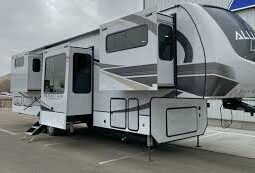Please Re-Register To Access All Our Forums New Features on RV-Living Forum
Post all your RV questions or comments on RV Forum
To be clear, the compressed air from one of these inflators will have exactly the same amount of moisture (dewpoint) as the outside air that is being compressed. The process of compressing the air adds/subtracts nothing. That being said, a filter/drier doesn't hurt a thing, and may reduce the moisture content of the air some under really humid circumstances.
I think that where we see problems on the tank type compressors is when the tank goes for a long period of time without being drained and it accumulates a lot of water. I have drained many cups of water out of park/refuge compressors that obviously hadn't been drained in a long, long time. This amount of water in a tank can introduce a considerable amount of moisture into a tire. It is even a bigger problem if you are trying to paint and get "spits" coming down the line.
I have drained many cups of water out of park/refuge compressors that obviously hadn't been drained in a long, long time.
Me too!
On a humid day in South Jersey my 5 gallon shop compressor will spray water if through a long hose. I run the compressor through a length of copper pipe, then a cheap water separator from HF, then a desiccant filter from NAPA. I use this whenever doing any tire repair or inflating.
Tank compressors are a different thing from tankless. I'm not aware of any filter that will remove humidity from a portable tankless compressor without being as big as the compressor and double the cost. The drier for my plasma torch is big and expensive.
Compressed air is hot. The compressed air contains as much moisture as in the original air it collected. Cool the air and the moisture condenses. We call that water. It doesn't matter what type of air compressor you use. My post was only about my experiences. I'm glad you have a big plasma something or other.
Compressed air is hot.
Only while or immediately after being compressed. It doesn't stay hot just because it is compressed.
This is where the tank type compressor varies from the tankless. In a tank-type the air is held at some elevated pressure (say 150 psi). Assuming that it has been there a while it will be a room temperature unless the compressor has been running recently. But as that 150 psi air comes through the regulator and either into a tire at a lower pressure or into the atmosphere (lower pressure still), it will indeed drop in temperature and may start condensing water, depending on the dew point of the air in the tank.
With a tankless inflator, the air is compressed, goes through a regulator, and is discharged all in one process. In that case it is highly unlikely (impossible I think?) to discharge the air at lower temperature than the ambient temperature that it went in at, so condensation shouldn't occur.
Time to Go Away. we have successfully hijacked this thread. I guess the water can't get in the tire from direct compressed air. What a engineering break through. good day to you.
Time to Go Away. we have successfully hijacked this thread. I guess the water can't get in the tire from direct compressed air. What a engineering break through. good day to you.
Not what I said at all. Whatever moisture is in the atmosphere goes into the tire. Nothing more, nothing less.
In that case it is highly unlikely (impossible I think?) to discharge the air at lower temperature than the ambient temperature that it went in at, so condensation shouldn't occur.
Really? Then how does air conditioning, or a refrigerator work?
You can't re-write the laws of physics, just because you don't understand them.
Rick, that's how air conditioning and refrigeration works. The pressure drop causes a temperature drop, resulting in ahh! Cool.


